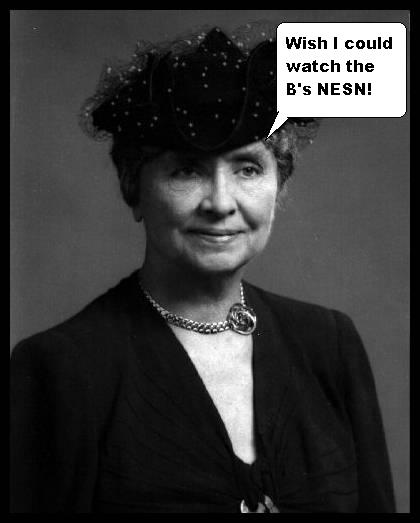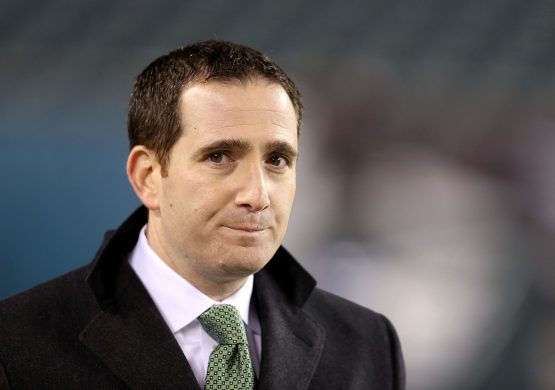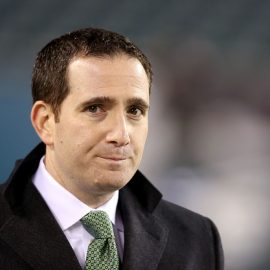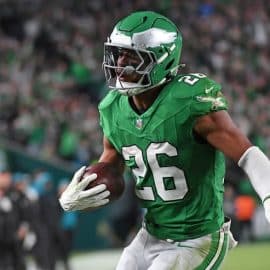Thanks to Kenny Kenemeka, who files regular reports on the labor front of the NFL here on our pages, we’ve been kept up to speed all along as the lockout enters its 99th day…
But yesterday we had a breakthrough, and Kenny was on it. Details of the current Owners’ meeting have been intentionally “leaked” to ESPN, as Kenny informed us… and here are the foundational details of the expected new agreement between NFL Owners and Players:
Proposed CBA Details:
Details of a proposed collective bargaining agreement being pitched to NFL owners Tuesday, according to sources:
• Players get 48 percent of “all revenue.”
• Players’ share will never dip below 46.5 percent, under new formula being negotiated.
• Teams required to spend close to 100 percent of the salary cap.
• Rookie wage scale part of deal but still being “tweaked.”
• Four years needed for unrestricted free-agent status. Certain tags will be retained, but still being discussed.
• 18-game regular season designated only as negotiable item and at no point is mandated in deal.
• Full 16-game Thursday night TV package beginning in 2014.
• Owners still will get some expense credits that will allow funding for new stadiums.
• Retirees to benefit from improved health care, pension benefits as revenue projected to double to $18 million by 2016.
— ESPN’s Chris Mortensen, John Clayton and Adam Schefter
Okay, I think we’re finally getting close. Good, that means we as fans will be spared from the constant influx of “Top 10” polls we have been subjected to by the media (including here) as the result of the lockout. I mean, I’m still okay with polls like this one:
ESPN’s Ranking the Left Tackles:
1. Joe Thomas, Cleveland Browns
2. Jake Long, Miami Dolphins
3. Ryan Clady, Denver Broncos
4. Jordan Gross, Carolina Panthers
5. D’Brickashaw Ferguson, NY Jets
6. Michael Roos, Tennessee Titans
7. Jason Peters, Philadelphia Eagles
8t. Marcus McNeill, San Diego Chargers
8t. Donald Penn, Tampa Bay Bucs
10. Matt Light, New England Patriots
But when you start ranking the “NFL’s Top 10 Assistant Coaches”, or the “NFL’s Top 10 Equipment Managers”, I gotta draw the line…wait a minute, actually those could be pretty nice topics for inside-the-ropes football fans! Okay, never say never… depending on how long the lockout continues…
Meanwhile, we are honored to get a shout-out from DeSean Jackson, who was just named #29 in the Top 100 NFL Players Poll conducted by the NFL Network.
DJax tweets to our site constantly here at Eagles Eye and has been accessible to our questions throughout the lockout.
In a way, I’ll miss the lockout, because then guys like DeSean Jackson will be too busy answering questions in official NFL.com pressers to be able to afford the time to talk with us here.
But since we have so many fans here who come for basic football knowledge as opposed to gossip or rumor, we decided to ask Jackson some fundamental football questions. He chose to answer the most important question of all: What are the essential pass routes he runs, and how are they numbered according to the so-called “passing tree”?
Here’s Jackson’s breakdown:
“The passing tree system is designed so that all even (2,4,6,8) numbered routes are run towards the middle of the field; and all
odd (1,3,5,7,9) numbered routes will be run towards the sideline. Not all coaches use the same numbering system or even a numbering system at all… Some coaches like to name the play instead of numbering it.”
“Let’s name a play…For example, Split right, 100, post. Split right tells the quarterback what formation to use….the 100, tells the linemen how to block the defense…and the word post, tells the quarterback who we want the ball to go to…”
“But any way you choose to name them, there are nine (9) basic routes an NFL receiver must know and attempt to master…and they are:
1 – Quick Out. . You run up the field about 5 yards, and then make a sharp cut out towards the sideline.
2 – Slant Route. Take 3 long steps forward then slant at a 45 degrees angled towards the center of the field. This is a timing route, so you will need to work with the quarterback to get the timing down.
3 – Deep Out. You run up the field about 10 yards, and then make a sharp cut out towards the sideline. This is the same pattern as the quick out except deeper.
4 – In/Drag Route. You run up the field and then cut in toward the center of the field at a sharp angle.
5 – Flag Route. You run up the field about 12-15 yards, and then break towards the flag in the back of the end zone.
6 – Curl Route. You run up the field about 12-15 yards, and then curl in towards the quarterback, at a 45 degrees angled. Find the open area of the field if they are playing a zone defense.
7 – Post/Corner. Fake a deep Post, and then run towards the flag in the back of the end zone.
8 – Post Route. You run up the field about 15 yards, and then break at a 45 degrees angled towards the deep middle of the field. This is the same pattern as the slant except deeper.
9 – Go/Streak/Fly Route. You will be running a straight sprint route off the line of scrimmage, as hard and as fast as you can. “
“And when running these patterns, the biggest mistake you can make is to slow down when catching the ball or after making your break. If you slow down before you catch the ball or after your break, you will be giving the defensive back time to catch up with you.”
Thank you for the routes lesson, DeSean. I appreciate having the numbers laid out like that. I can now watch a route on TV and identify it by number, even if I already knew what the name of the route was…
Any final words from DeSean on his craft?
“The most important skill that a receiver can master is strong desire to catch the ball… A receiver should concentrate on looking the ball into his hands (all the way into his hands). A receiver must be able to shut everything out of his mind by focusing all his attention on looking the ball into his hands. A receiver must watch the football until he catches it and puts it away before he starts to run with it. The catch is more vital than the run after. The last twelve inches of the flight of the ball are the most important of all, as this is where most receivers take their eyes off the ball and drop it.”
I thank DeSean Jackson for his time spent talking about the technique of the sport. I purposely did not want to invade his space over the litigative issues or potential contract scenarios approaching him and his agent in the very near future. For now, it’s just good to hear from an Eagles player who’s content to stay on football.
Add The Sports Daily to your Google News Feed!






